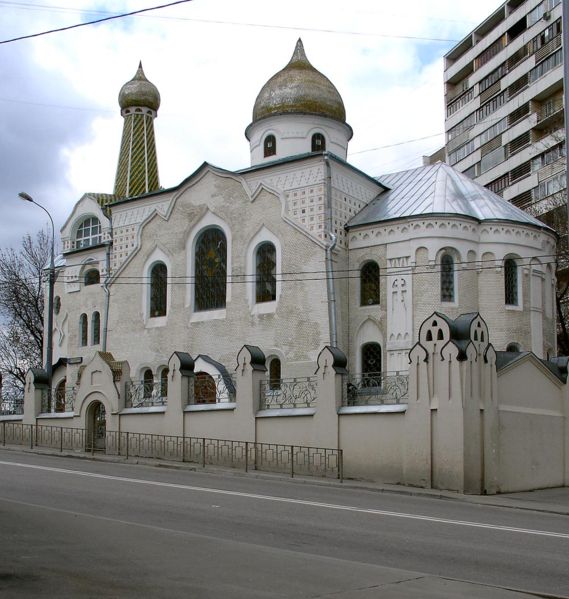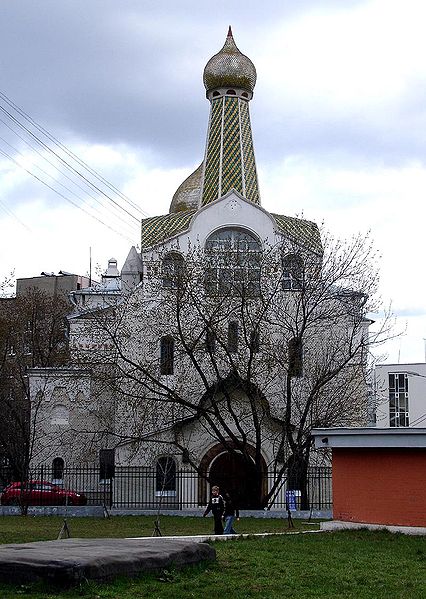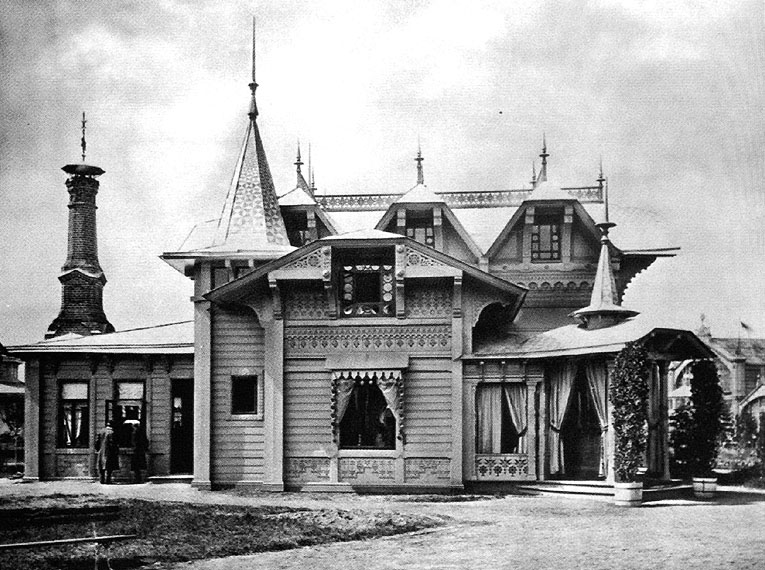<Back to Index>
- Architect Vyacheslav Konstantinovich Oltarzhevsky, 1880
- Architect Ilya Yevgrafovich Bondarenko, 1867
PAGE SPONSOR
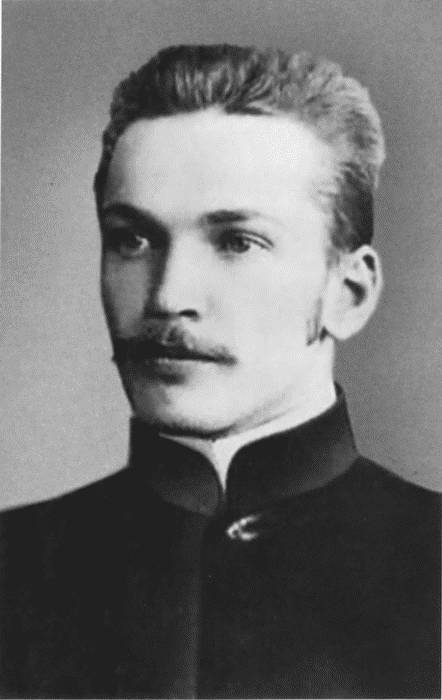
Vyacheslav Konstantinovich Oltarzhevsky (Russian: Вячеслав Константинович Олтаржевский, 1880 – 1966) was a Russian Soviet architect. He was one of the first Soviet experts in skyscraper construction, notable for his collaboration with Arkady Mordvinov on Hotel Ukraina (Moscow). Oltarzhevsky, one of the few architects hit by the Great Purge in 1938, survived it and returned to active practice in 1940s.
Vyacheslav Oltarzhevsky was born in a family of a government official in Moscow. He studied architecture at Moscow School of Painting, Sculpture and Architecture (1901 – 1908) and in Vienna under Otto Wagner (1905). He assisted older architects Ivan Rerberg, Illarion Ivanov - Shitz and Marian Peretyatkovich, and completed his first independent commission in 1909. His most visible building before World War I was the Northern Insurance in Kitai gorod (shared with Rerberg and Peretyatkovich).
In 1924 -
1934, Oltarzhevsky lived in United States with an
official mission to study and evaluate modern construction
technology, becoming the leading Soviet expert in highrise
steel frame construction.
In 1935, Oltarzhevsky was appointed to be the chief architect of All Russia Exhibition Centre; in April, 1936 his master plan was officially approved. By 1938, Oltarzhevsky completed most of this plan, notably the Mechanisatsia stepped tower, a predecessor of late stalinist architecture towers. The fall of Commissar for Agriculture, Mikhail Chernov, arrested in 1938 for the Bukharin conspiracy, caused a domino effect in the Commissariat for Agriculture which supervised the Exhibition. Oltarzhevsky was arrested, too, but spared from death penalty, and served his term in Vorkuta, as a town architect, until 1943. Meanwhile, his work at the Exhibition was branded alien art; some of his buildings were torn down and rebuilt from scratch.
After World War II, Oltarzhevsky was assigned to the Moscow Skyscraper Project. His own plans were discarded, because all jobs were awarded in advance to most influential Soviet architects. Oltarzhevsky joined Arkady Mordvinov on his Hotel Ukraina skyscraper in Dorogomilovo District; both architects were awarded the Stalin Prize in 1948 for conceptual drafts, before actual construction began.
Before Ukraina was
completed, Oltarzhevsky compiled his "Skyscraper
Construction in Moscow" ("Строительство высотных зданий в
Москве", 1953), which remains a principal information
source on late stalinist high - rise project.
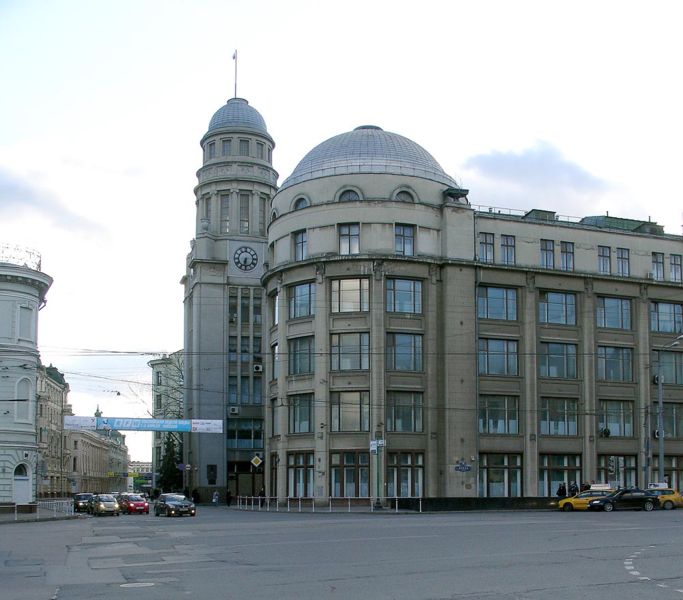
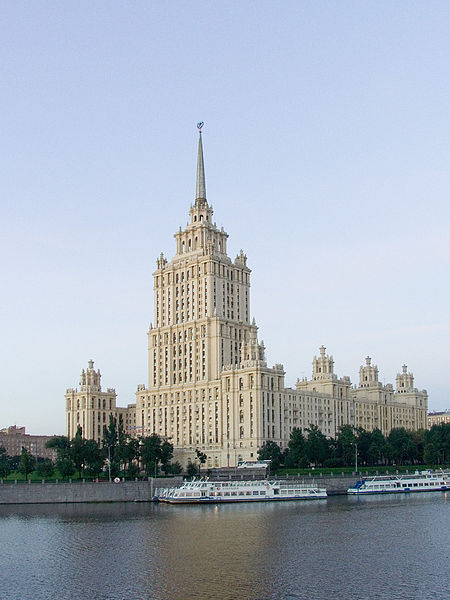
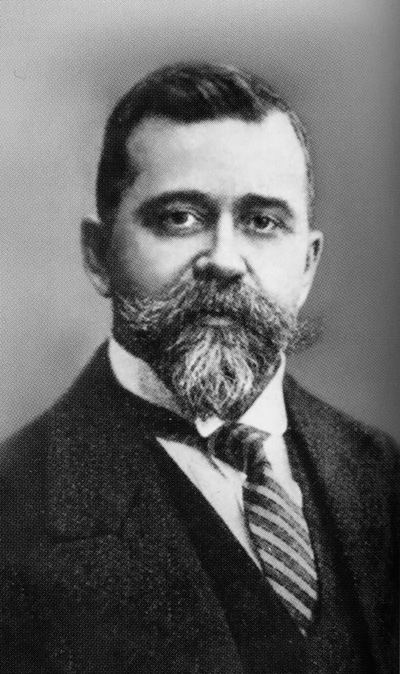
Ilya Yevgrafovich Bondarenko (Russian: Илья Евграфович Бондаренко; 1867 – 1947) was a Russian - Soviet architect, historian and preservationist, notable for developing a particular style of Old Believers architecture in 1905 - 1917, blending Northern Russian revival with Art Nouveau.
Bondarenko trained at Moscow School of Painting, Sculpture and Architecture in 1887 - 1891 (class of Alexander Kaminsky), completing his education at the Zurich Polytechnikum in 1894 and at Fyodor Schechtel's firm (1895 – 1896). He travelled within Russia throughout 1890s, studying traditional architecture of the North and Volga regions.
He was associated with the Savva Mamontov - sponsored group of artists and with the Abramtsevo Colony; these connections helped him secure his first major project - Russian Crafts pavilions at the Exposition Universelle (1900) in Paris, in partnership with Konstantin Korovin. Later, Bondarenko would rely on Abramtsevo ceramics in most of his works. He was well skilled in Art Nouveau interior design, taking part in Ivan Fomin's 1902 Art Nouveau exhibition. His style, influenced by Victor Vasnetsov and contemporary work of Sergey Solovyov, is a direct development of the Abramtsevo school, yet with a unique touch of austere Old Believers traditions and a deep first - hand knowledge of Pskov and Novgorod relics.
During the Russian
Revolution of 1905, the government lifted earlier
bans off Old Believers, allowing them, at last, to
build their own churches (before April, 1905, worship
was limited to a few historical places like Rogozhskoye Cemetery). Congregations responded with
numerous new construction projects. Bondarenko, well
known to influential community leaders, became the
foremost architect for Belokrinitskaya
Hierarchy. In
1907 - 1908 he built the first new Old Believers church
in Moscow, in Tokmakov Lane (for the Pomorian Old - Orthodox
Church). This
was followed by churches in Noginsk,Riga, Kashin, Orekhovo
- Zuevo, three
more churches in Moscow. He also worked for the State Church, completing the Shuya Cathedral
in 1912.
Bondarenko adored the Moscow variety of Neoclassicism, and was engaged in studies of this style since 1904. In particular, he discovered and published the original drawings of Domenico Giliardi and Afanasy Grigoriev (1913), and wrote the first biography of Matvey Kazakov (1912).
After the Russian Revolution of 1917 Bondarenko, despite his affiliation with the church, found a place in the Soviet system - first as the museum manager in Ufa (1919 – 1921), where he set up the first theater and the first museum (present day Mikhail Nesterov Museum; Nesterov and Bondarenko were close friends). In 1921, Bondarenko returned to Moscow, and worked in various soviet institutions until his death in 1947.
In 1930s, he returned to
architecture, working with historical buildings, notably
his 1938 expansion of Bakhrushin Museum of Theater
and 1933 expansion of Moscow Conservatory. He held the title
of chief architect of Vagankovo Cemetery,
chief architect of Mosenergo, and was engaged in numerous
consultancies regarding old buildings, including the 1938
- 1940 surveys of Saint Basil's Cathedral. His last
assignment has been the restoration of Matvey Kazakov's Travel Palace in Tver, damaged during World War II.
